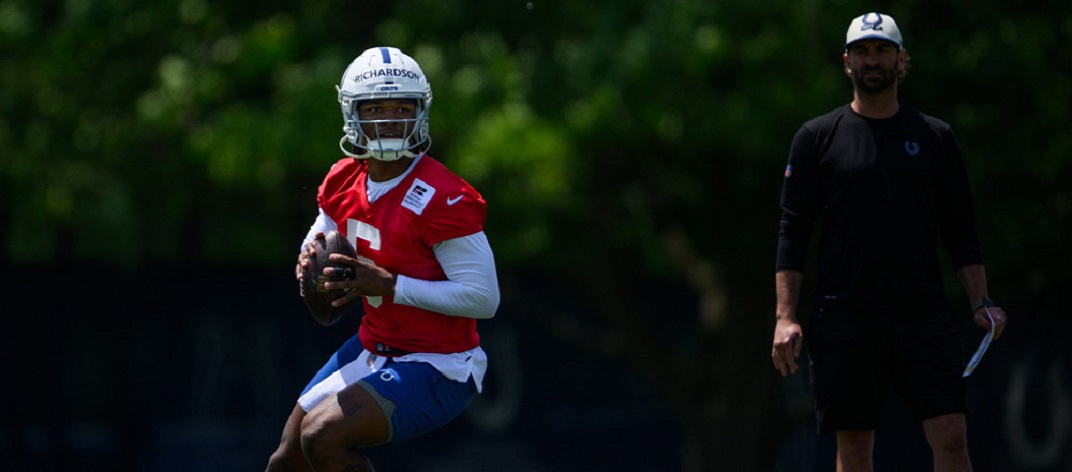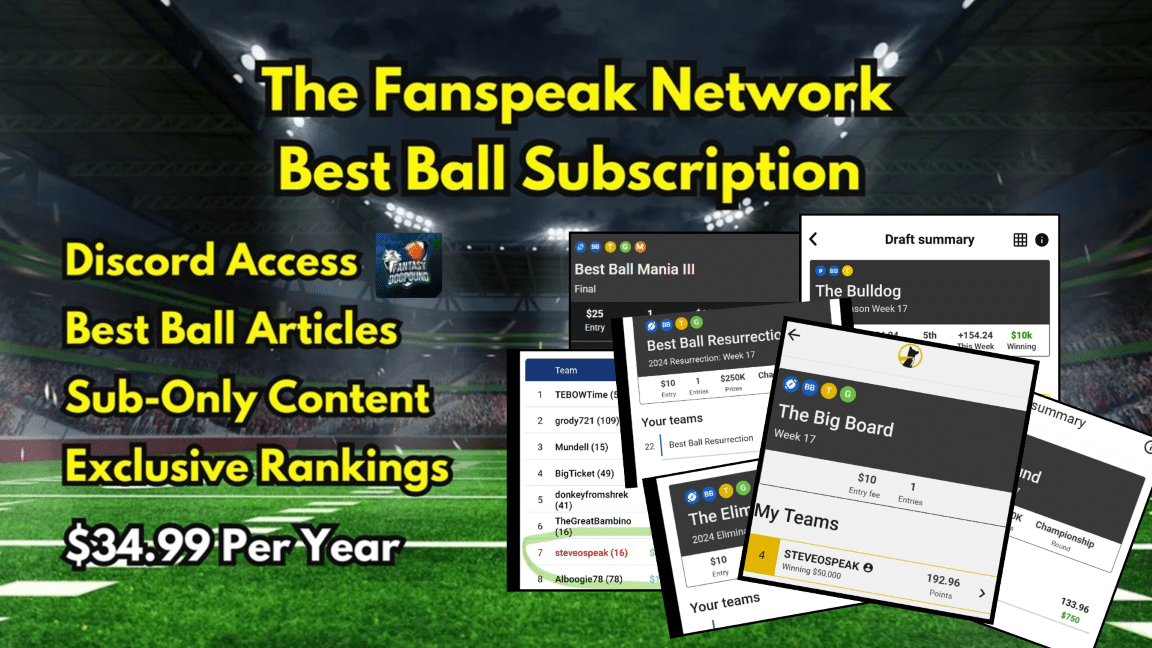Conclusions to Drafting Rookie QBs in Best Ball

Part 1 – Rookie QB Data 2011-2022
Part 2 – Analyzing the Rookie QB Data 2011-2022
Part 3 – Conclusions on Rookie QBs in best ball
Before reading Part 3, I recommend reading Part 1 and Part 2 which include data from 2011-2022 on rookie quarterbacks, and then analyzing what that data means. Now I want to draw conclusions from that data regarding actionable items we can use in best ball this season. Especially with rookie QB Anthony Richardson at a current ADP of 90 and being drafted as QB10 in best ball on Underdog.
The Outliers:
Over the last dozen seasons, there have been essentially three outlier QBs in Cam Newton, Robert Griffin III, and Deshaun Watson. All three finished 1st or 2nd in points per game and combined for 10 of the 18 30+ point games. The other 46 rookie quarterbacks combined for 8 major spike weeks. 2011 and 2012 seasons were unique in the sense that 4 of the 8 QBs that finished as QB1s (Newton, Griffin, Andrew Luck, and Russell Wilson) came from those two seasons (four out of 10 total QBs in those 2 years). In the 10 years since, just four other QBs out of 39 finished at QB1s.
The QB2s:
The best you can really hope for is a rookie finishing as a QB2 with moderate spike week potential. Even those cases end up being riskier picks than expected, given their volatility. Take for instance the cases of Daniel Jones, Marcus Mariota, and Geno Smith.
-
- Jones only had 11 full games in the sample, and of those he had four really strong spike weeks of 28+ points. For the rest of his season, he couldn’t even crack 15 fantasy points. He might have finished as a QB1 (11th), but he didn’t perform at that level. Just 4 usable weeks out of 15 is not a great outcome, even with them being significant production. Now if he was drafted as say QB25+, and clearly your 2nd QB you would see the value of those spike weeks. As a QB1 though, he would have not been a strong draft pick.
-
- Mariota only had 12 games, but with four over 20 points including 2 over 30, he was a good spike week player. He did have a couple of other 15-19 point games, which gave him a much stronger floor. That said he also had 4 with 10.2 points or less. This is why he only was able to finish as QB17. As long as he wasn’t drafted too much past QB20, he was a good pick. Otherwise, the risk would have been too much.
-
- Smith had 5 games over 20 points, which is great for a rookie. So how did he finish as QB33? Well, he also had 7 games under 10 points, including multiple games with negative fantasy points. Even with the spike weeks, it would have been tough to classify Smith as anything more than a high-end QB3.
Spike Weeks are nice from rookie quarterbacks, but there just aren’t a lot of rookie QBs who showed spike weeks, and the consistency you’d want as a QB1 or QB2. The extremely low floor we see from even some of these “successful” rookie QBs, should change how we approach drafting them.
Conclusion Regarding QB Anthony Richardson ADP:
Simply put we should lower our expectations of the viability of rookie QBs in Best Ball fantasy. Currently, right now Anthony Richardson (QB10), Bryce Young (QB23), and C.J. Stroud (QB27) are being drafted too high given the track record of rookie QBs.
Richardson is going ahead of quarterbacks like Dak Prescott, Kirk Cousins, Tua Tagovailoa, Daniel Jones, and Aaron Rodgers. Prescott and Cousins have consistently had 5-9 20+ point games a season, with typically 1 or 2 cracking 30. Rodgers may be coming off a down season, but he had 12 games over 20 points in 2020, and 11 over 20 points in 2021. Is Richardson, really going to outperform those resumes? Even if he does have some spike weeks, he’s probably more like Jones with a handful of big weeks, but a lot of unusable weeks as well.
Young and Stroud don’t come with nearly as much opportunity cost, but they also should be considered risky investments. It will be tough for Young to have much more value than his current draft spot. He should only be considered a QB2 option if you have a very strong QB1, who should put up at least average games most weeks. Stroud as a QB3 isn’t super risky, but he should still be paired with other quarterbacks that you have some confidence in.
Given their low weekly floor, drafters should only take rookies as a part of a 3 QB build. That might not be the most popular take, but it’s the correct one when it comes to rookie QBs. Only a handful of rookie QBs were strong weekly fantasy options, with a good floor and the ability to produce 5-8 20+ point games.
Not only do you need to worry about rookies putting up consistent scores under 10 points, but you also should consider that at least one of the rookie Qbs might not start week 1. If that is the case, hopefully, they can enter the line-up quickly, but there is no guarantee of that. There is no reason to risk taking a zero from the QB spot, due to an injury to your starter or an early bye week.
In the case of Richardson, it’s absolutely clear his price is too high currently. If you do select him, you should look to add a pair of other top 20 QB options to ensure you are covered. That’s a lot to invest in the position, but if you don’t you might not even get to benefit from his high-ceiling potential if you don’t make the playoffs.

